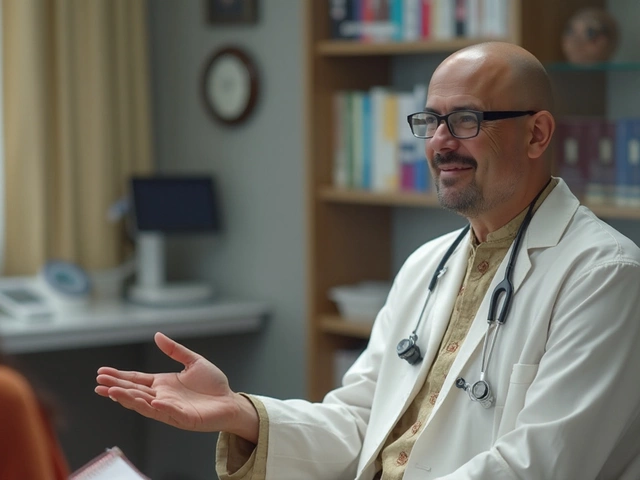
Ever chat with someone after they've had a knee replacement? The first thing they usually bring up isn’t about scars or medical bills—it’s how stiff their new knee feels. This is hands-down the biggest gripe people have after surgery, way more common than pain that lingers or infection scares. If you or someone you care about is facing this, you’re definitely not alone.
Knee stiffness can mess with everything, from climbing stairs to that annoying little bend you need just to tie your shoes. It’s frustrating because you went through all that trouble to fix something, and now it just feels stuck. Doctors actually expect some tightness during the first few weeks, but for some folks, it drags on way longer, turning everyday tasks into a real challenge.
The good news? Understanding what causes that stiffness is the first step to working around it. The way you move (or don’t move), how much swelling you’ve got, and even small things during surgery play a role. Stick around, because there are straightforward ways to loosen up your knee—and plenty of people see huge improvement just by tweaking their recovery plan.
- The Top Complaint: Stiffness and Why It Happens
- Pain vs. Stiffness: Sorting Out Recovery Challenges
- How Much Stiffness Is Normal?
- Simple Fixes and When to Get Help
The Top Complaint: Stiffness and Why It Happens
Stiffness is the number one thing people complain about after a knee replacement. Researchers at the Mayo Clinic found that almost 20% of knee replacement patients don’t get the bend in their knee they hoped for within the first three months. And when you think about all the stretching, exercises, and follow-up visits you do to make it better, it can get seriously frustrating.
The main reason for the stiffness? Swelling around the joint, scarring inside the knee, and some good old-fashioned hesitation to move because it hurts. After surgery, your body starts healing by making scar tissue, but that scar stuff can wrap around the new knee and limit how much it bends or straightens. Too much swelling early on also keeps everything tight. It’s like wearing a thick knee brace 24/7—you want to move, but your knee just isn’t interested yet.
Doctors call stiffness after a knee replacement “arthrofibrosis.” With this, your knee might struggle to bend past 90 degrees or straighten all the way weeks after surgery. Not moving enough right away or skipping physical therapy is a big risk. But even folks who follow every doctor’s order sometimes end up with stiff knees. Your body just reacts in its own way.
Spotting the difference between normal and stubborn stiffness is key. Here’s what folks usually see in the first few months:
| Time After Surgery | Average Knee Bend (Degrees) | What Most Patients Feel |
|---|---|---|
| 2 weeks | 60-80° | Knee feels tight, a little swollen, tough to bend |
| 6 weeks | 90-100° | Stiffness still there, but bending easier |
| 3 months | 110-120° | Most folks back to basic activities, but stairs are hard |
| 6 months | 120°+ | Knee usually feels looser, but not always. Some remain stiff |
What you do in those first weeks really matters. Skipping exercises after surgery? That’s going to slow down progress. But overdoing it—like going up and down stairs a dozen times a day—can cause extra swelling and set you back, too.
The bottom line: stiffness is the top knee replacement complaint because your body has a lot of healing to do—and everyone heals differently. Knowing what to expect helps you stay motivated without freaking out at every tight feeling. Next, let’s see how you can tell if your pain is normal, or if something else is at play.
Pain vs. Stiffness: Sorting Out Recovery Challenges
Pain and stiffness can feel pretty similar when you’re lying there wondering if your knee will ever feel normal again. But they're not the same—and knowing the difference helps you manage both a lot better. Pretty much everyone after knee replacement walks around with aches and swelling early on. The weird part? Pain usually gets better before stiffness goes away. A lot of folks are shocked at how stiff their knee still is weeks—even months—after pain has settled down.
The surgeons at Mayo Clinic back this up, saying,
"Stiffness is the most frequent complaint by patients, and while persistent pain is possible, it’s usually the feeling of ‘tightness’ that bothers people.”
Pain after surgery usually feels sharp, throbbing, or like a deep ache. It’s most intense for the first few days, then starts to ease with meds and rest. If you follow the exercises your therapist gives you, pain often drops to a dull roar pretty quickly. Stiffness is different. It's more like trying to bend a frozen hose. You can push, but it pushes right back, especially in the morning or after sitting still. Sometimes people say it even feels like there’s a band squeezing the knee.
Still not sure what’s normal? Check out this table with basic recovery timelines:
| Symptom | Typical Timeframe | What’s Normal |
|---|---|---|
| Pain | Peaks in week 1, improves by week 3-4 | Eases up with medication, therapy |
| Knee stiffness | Starts days after surgery, can last 6+ weeks | Better with movement, but can linger for months |
If pain suddenly spikes, or you can’t move your knee at all, call your doc. Otherwise, most stiffness fades with regular stretching and by simply moving around more. It’s all about staying active, doing the boring stretches—even if Shadow (my dog) thinks you look ridiculous on the floor doing leg lifts.

How Much Stiffness Is Normal?
Right after knee replacement surgery, everyone has some stiffness—totally normal. Most people can bend their knee to at least 90 degrees (enough to sit in a chair) by about two weeks, and up to 120 degrees (enough for stairs and squats) within two months. But if you can’t get past 90 degrees after six weeks, your doctor might want to check things out.
Here’s what usually happens for the average person:
| Time After Surgery | Bending Range (Degrees) | Can You Straighten Fully? |
|---|---|---|
| 1-2 weeks | 60-90 | Usually not yet |
| 3-6 weeks | 90-110 | Getting closer |
| 7-12 weeks | 110-120+ | Yes, for most |
A little morning stiffness or tightness after you’ve been sitting is totally expected, even six months out. But if you feel like your knee is a rusty hinge all day, that’s worth mentioning at your check-up. Sometimes scar tissue builds up, which can make bending and straightening tough. More severe cases might need a special procedure to break up that scar tissue—but most don’t get that far if you stick to your physical therapy.
Dr. James Fox, an experienced orthopedic surgeon, puts it simply:
“It’s normal to have some stiffness for a few months after knee replacement, but if you can’t get your knee flat or bend it enough to climb stairs by three months, that’s something to flag. The sooner we know, the better we can help get things moving.”
The most critical signs you’re on track are:
- You can bend the knee to at least 90 degrees by two weeks, aiming for 110-120 degrees within three months.
- Your knee gets mostly straight, even if you feel a bit sore.
- Morning stiffness and swelling get better through each week, not worse.
Don't stress if you’re not hitting these numbers perfectly; everyone heals at their own pace. But use these checkpoints to talk with your doctor if you’re worried. They want you moving and feeling good again—not stuck on the sidelines with a stiff new knee.
Simple Fixes and When to Get Help
If you’re fighting that post-op tightness, don’t worry—there are straightforward ways to tackle it at home before you even think about running back to the doctor. Most people don’t realize how much small daily steps matter when it comes to getting your knee moving smoothly again.
First up: movement is your friend. Don’t skip those stretches and exercises, even when your knee feels stubborn. Physical therapists see better results in folks who do a mix of stretching and strengthening exercises throughout the day. Here are some tried-and-true fixes:
- Knee replacement “heel slides” – Lying on your back, slowly sliding your heel toward your butt helps with bending without stressing your knee.
- Stationary biking – Even if it feels awkward, just gentle cycling (no resistance) gets your knee used to moving again.
- Ice packs – Swelling equals stiffness. Keeping swelling down with a bag of frozen peas for 15 minutes at a time really does help.
- Regular walking – Frequent short walks keep you looser than just lounging on the couch all day.
If you want the stats, look at this table—it sums up what most people deal with after surgery:
| Issue | How Common? | How Long? |
|---|---|---|
| Stiffness | Up to 50% report mild-to-moderate stiffness | Most improve in 3-6 months |
| Severe stiffness | About 5-10% need extra help | May last 6 months or longer |
| Pain with movement | Common (30-40%) in first month | Improves by month 3 |
You shouldn’t have to just “tough it out” if nothing’s getting better or something feels really off. Call your surgeon if you have:
- Knee stuck in a bent or straight position for days
- Redness, heat, or weird swelling that isn’t fading with ice
- Sharp, sudden pain out of nowhere
- Catching, locking, or popping with every bend
Don’t wait for things to go from annoying to unbearable. Early help could mean a quick fix, like extra therapy or a simple procedure, instead of another long wait for recovery. Keeping your knee happy is a team effort—between you, your physical therapist, and your surgeon, you’ve got this.





Rohan Talvani
I am a manufacturing expert with over 15 years of experience in streamlining production processes and enhancing operational efficiency. My work often takes me into the technical nitty-gritty of production, but I have a keen interest in writing about medicine in India—an intersection of tradition and modern practices that captivates me. I strive to incorporate innovative approaches in everything I do, whether in my professional role or as an author. My passion for writing about health topics stems from a strong belief in knowledge sharing and its potential to bring about positive changes.
view all postsWrite a comment